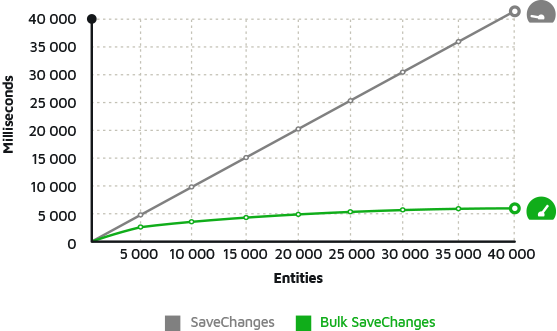Entity Framework Bulk Update Discover How to Improve Update Performance
Definition
UPDATE all entities in the database.
All rows that match the entity key are considered as existing and are UPDATED in the database.
// Easy to use context.BulkUpdate(list); // Easy to customize context.BulkUpdate(customers, options => options.ColumnPrimaryKeyExpression = customer => customer.Code);
Purpose
Updating entities using a custom key from file importation is a typical scenario.
Despite the ChangeTracker being outstanding to track what's modified, it lacks in terms of scalability and flexibility.
SaveChanges requires one database round-trip for every entity to update. So if you need to update 10000 entities, then 10000 database round-trips will be performed which is INSANELY slow.
BulkUpdate in counterpart offers great customization and requires the minimum database round-trips possible.
Performance Comparisons
| Operations | 1,000 Entities | 2,000 Entities | 5,000 Entities |
|---|---|---|---|
| SaveChanges | 1,000 ms | 2,000 ms | 5,000 ms |
| BulkUpdate | 50 ms | 55 ms | 65 ms |
ZZZ Projects
